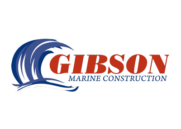How to Tell If Your Seawall is Damaged
A well-constructed and well-maintained seawall is vital to preserving the value and integrity of your Florida waterfront property. If your seawall fails, it can be devastating to both, not to mention, an expensive mess to clean up. Keeping an eye out for signs of seawall damage, can help you keep your seawall properly maintained and help prevent seawall failure.
Five Signs Your Seawall Needs Repaired or Replaced
Regularly inspecting your seawall for signs of damage can help you determine if your seawall may be in need of repairs. While performing these regular inspections, answer the following questions:
- Do you see any cracks in the seawall cap or have any small chunks broken off of it?
- Are there any visible rust stains on the seawall?
- Are there any large or widening gaps between the seawall slabs?
- Are any slabs cracked, bowing, leaning, or misaligned?
- Do you see soil settling or any holes along the seawall?
Cracks or Small Chunks Broken Off of the Seawall Cap
The seawall cap runs along the top of the seawall and is typically comprised of steel reinforced concrete. It’s not enough to just check the top side of the cap, you also need to inspect the sides of the cap, particularly the front of the lower cap area facing the water. If you see cracks or small chunks missing from the cap, this can mean the rebar is exposed. This exposure can lead to corrosion of the rebar, weakening the seawall, and potentially causing it to fail.
It is important to contact a seawall repair company, as soon as you notice that the rebar could be exposed. If you catch the issue quickly, you could save yourself some serious cash by only having to repair or replace the concrete part of the seawall cap and not all the rebar too.
Visible Rust Stains on the Seawall
Visible rust stains are another sign of possible corrosion. It is important to find out where the rust stains are coming from. Sometimes the source can be easy to pinpoint, such as it coming from a metal railing or decorative feature. Other times, it may appear to be seeping through cracks in the seawall’s surface.
If you can’t easily track the source of the rust to a nonessential feature of the seawall, especially if you are unfamiliar with the seawall’s maintenance history – you should contact a professional to have the seawall inspected.
Large or Widening Gaps Between Seawall Slabs
If you see a gap between seawall slabs that is significantly larger than the other gaps between slabs, or the gaps appear to be widening in general, this could be a sign that the joints have weakened or broken. It is usually caused by anchors failing, which can lead to the seawall cap cracking and/or significant damage to seawall slabs.
Seawall Slab Damage is the Leading Cause of Sudden Seawall Failure
Seawall slabs are under constant stress and pressure. A pressure imbalance can lead to a slab cracking, bowing, leaning, or becoming misaligned. And if the slab is not repaired or replaced, and the pressure balance restored, the slab(s) can buckle resulting in a partial or complete sudden seawall failure.
If you see any signs of a seawall pressure imbalance, call a seawall construction company immediately. Repairing a damaged slab(s) is much more affordable than having to replace a seawall that has failed.
Soil Settling or Holes in the Ground are Signs of a Seawall Pressure Imbalance
Soil settling or holes in the ground along or near your seawall are signs of erosion. Erosion is another common cause of a pressure imbalance, that can lead to slab damage and potential seawall failure. Call a professional seawall repair company right away to assess the problem and make repairs before seawall failure occurs.
If You See Signs of Seawall Damage, Call Gibson Marine Construction
Gibson Marine Construction is your one stop shop for all of your seawall repair and replacement needs. Contact us today about any signs of seawall damage you see and ask for a free consultation.

